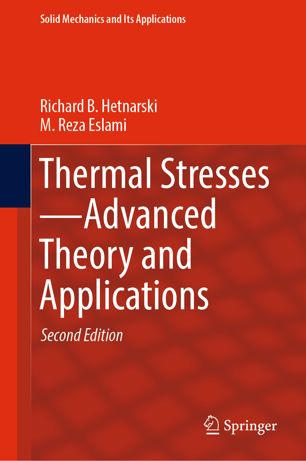

Most ebook files are in PDF format, so you can easily read them using various software such as Foxit Reader or directly on the Google Chrome browser.
Some ebook files are released by publishers in other formats such as .awz, .mobi, .epub, .fb2, etc. You may need to install specific software to read these formats on mobile/PC, such as Calibre.
Please read the tutorial at this link: https://ebookbell.com/faq
We offer FREE conversion to the popular formats you request; however, this may take some time. Therefore, right after payment, please email us, and we will try to provide the service as quickly as possible.
For some exceptional file formats or broken links (if any), please refrain from opening any disputes. Instead, email us first, and we will try to assist within a maximum of 6 hours.
EbookBell Team

4.4
82 reviewsThis is an advanced modern textbook on thermal stresses. It serves a wide range of readers, in particular, graduate and postgraduate students, scientists, researchers in various industrial and government institutes, and engineers working in mechanical, civil, and aerospace engineering.
This volume covers diverse areas of applied mathematics, continuum mechanics, stress analysis, and mechanical design. This work treats a number of topics not presented in other books on thermal stresses, for example: theory of coupled and generalized thermoelasticity, finite and boundary element method in generalized thermoelasticity, thermal stresses in functionally graded structures, and thermal expansions of piping systems.
The book starts from basic concepts and principles, and these are developed to more advanced levels as the text progresses. Nevertheless, some basic knowledge on the part of the reader is expected in classical mechanics, stress analysis, and mathematics, including vector and cartesian tensor analysis.
This 2nd enhanced edition includes a new chapter on Thermally Induced Vibrations. The method of stiffness is added to Chapter 7. The variational principle for the Green-Lindsay and Green-Naghdi models have been added to Chapter 2 and equations of motion and compatibility equations in spherical coordinates to Chapter 3. Additional problems at the end of chapters were added.